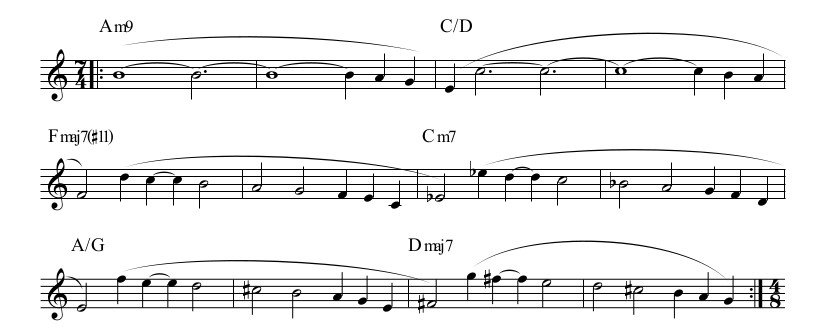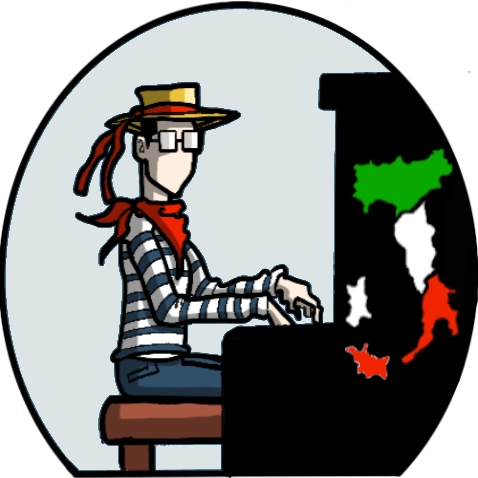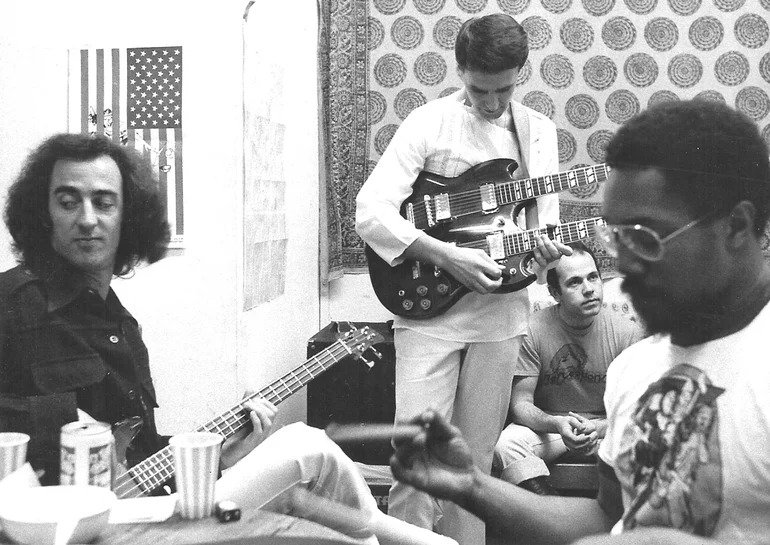[Monday Notes No. 146] The Mahavishnu Orchestra of Billy Cobham and John MacLaughlin is one of the greatest jazz rock bands in history. The group draws inspiration from various musical genres, but the most original component is traditional Indian music, of which the guitarist was passionate. Let us listen to and analyse Dawn.
Dawn is part of the Mahavishnu Orchestra’s first album, dated 1971 and entitled The Inner Mounting Flame. The piece has an odd time signature, the first theme is built on 7/4 measures.
Normally odd times create in the listener a sense of incompleteness, of precariousness. However, this is not the case with Dawn; the first theme consists of long notes and broad phrases that mitigate the sense of irregularity of the 7/4. Here is the score of Dawn’s main theme.

After the exposition of the theme and a few runs of improvisation, at minute 2’32” the piece suddenly becomes inflamed. The second theme has a purely rhythmic quality, the tempo is doubled into a 7/8, which is itself subdivided in a very peculiar way: 4/8+4/8+3/16+3/16. Here is the transcription of Dawn’s second motif.

It should come as no surprise that the second theme of the song is purely rhythmic in nature, with no real melody. This is the imprint that drummer Billy Cobham often puts on his bands, with rhythm at the centre of the musical discourse. On this pattern, the other instruments improvise, interweaving.
From an amonic point of view, we observe that Dawn has a non-functional harmony. It is in fact not a tonal piece, evidently, but neither is it a typical jazz modal piece.
In Dawn the chords are placed side by side according to a purely colouristic pattern. In the part [A] two chords recall scales with #11, the Fmaj7(#11) but also A/G which could be marked with G7(#11).
Dawn is a delicate and powerful piece at the same time. If we think that the music wants to express what the title ‘dawn’ indicates, part [A] represents the soft light before dawn, when the sun is not yet visible. Part [B], on the other hand, is the direct light of the sun, burning and violent, suddenly appearing behind the horizon. A light that is life but can also hurt, just like all great music.
Until next Monday
Download the lead sheet of di Dawn – Mahavishnu Orchestra


